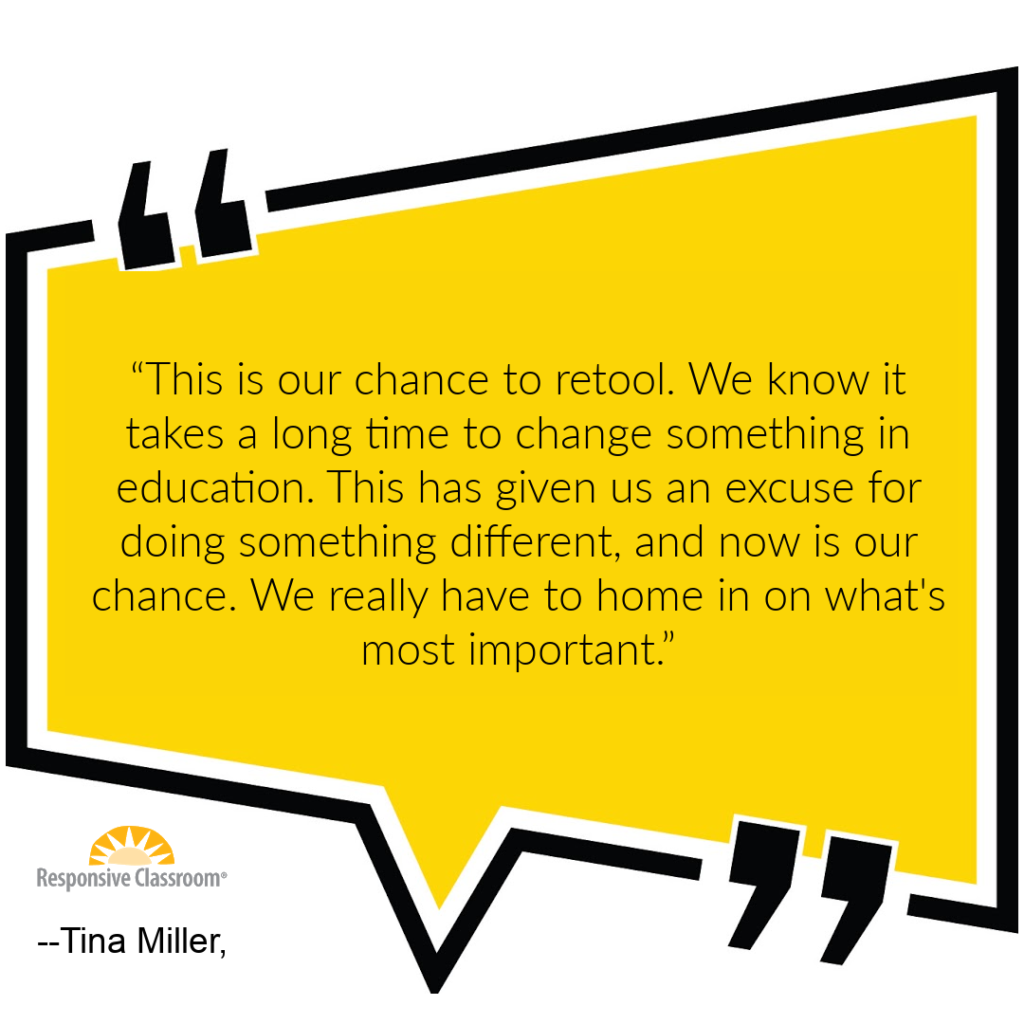Tina Miller has been in education for 21 years – including the last five years as principal of Howe Elementary in Wisconsin Rapids, Wisconsin – and was recently named the 2021 Wisconsin Elementary School Principal of the Year by the Association of Wisconsin School Administrators. Center for Responsive Schools had a chance to sit down with Principal Miller and discuss the unique challenges school leaders faced in the past year, what she has learned from it, and how she hopes to apply that learning to the next school year. Here is some of what we learned.
This year, schools that held in-person learning all faced a common challenge: masks. Howe Elementary followed CDC guidelines, which meant everyone in the building needed to wear a mask at all times, but complications still arose in moments when one educator got lax with this rule in the presence of others. Miller credits the adult guidelines that her staff set at the beginning of the year for helping them navigate these thorny situations.
To create these guidelines, Miller holds an annual all-staff gathering in which everyone comes together to discuss and ultimately agree on the adult guidelines. As Miller explains, “Being proactive at the start of the year with adult guidelines sets us up for when the tough times happen.” So, when a teacher came to her with an issue regarding another teacher improperly wearing their mask, she could respond, “Have you talked to that person yet? Is this something you’re sharing with me because you want coaching as to what to say? And then, after you’ve done that, if it continues to be a problem, I absolutely can step in.”
Miller looks for other opportunities to create a school culture in which everyone “leans in to open and honest communication” by employing Responsive Classroom practices at staff meetings. One of her go-to strategies at the end of meetings is the exit ticket. The payoff for her is that “I appreciate knowing what they’re thinking, and I want to give them opportunities to share and just be honest with me.” During virtual meetings, in lieu of sticky notes Miller uses breakout rooms to create opportunities for open communication. For this reason, during the pandemic “breakout rooms have been such a blessing.”
Another Responsive Classroom practice Miller turns to often is circle charts, found in Energize Your Meetings. Early in the year, she used them to help her staff brainstorm ways to incorporate COVID safety regulations into their current pedagogy. So, for example, when making a circle chart about recess, she had a group of staff members “brainstorm all the different ways we can teach kids to be safe at recess using these new protocols. How do we teach games when students really shouldn’t be touching each other? How do we line them up so they know to keep that spacing between each other?” She then had other staff members sort the responses into categories, such as,“these are teacher-related things, these are student practice things, and these are things we can just have typed up as guidelines.”

Of the many changes and innovations Miller and her staff implemented in the past year to make learning safe, some were so effective that they will continue to be used next year. For instance, Miller started recording videos a few days before staff meetings where she would share the important details that would usually be opening announcements at an in-person meeting. Sending these videos out to the staff a few days ahead of the meeting means that the actual meeting becomes “a time to talk, ask questions, pose ideas, and chat in breakout rooms.” This idea was inspired by the understanding that “We know that learning floats on the sea of talk. So, how do I facilitate those opportunities for educators to really talk together when they’re so busy during the day they can barely say hi in the hallways?”
Similarly, Howe Elementary began staggering their lunch periods, so that “instead of two grade levels in the cafeteria at the same time, there’s just one.” This was out of necessity, but what Miller has noticed is that students find more success in these spaces when there are fewer students because “it’s a calmer environment.” Extending the lunch period requires an increased budget for lunchtime staff (Miller calls them lunch teachers because she wants to “ensure that everybody is seen as a teacher” and “lunch teachers are showing us how to be appropriate in the lunchroom”), so Miller asked the superintendent, “just give us another year to keep going with this.” She believes this moment in time is an opportunity educators can’t pass up.